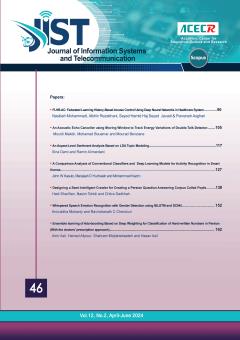In this paper we have studied the characteristics of mushroom-like Electromagnetic Band Gap (EBG) structure and performance of a low profile antenna over it. Afterward, a novel EBG surface is presented by some modifications in mushroom-like EBG structure. This structure
More
In this paper we have studied the characteristics of mushroom-like Electromagnetic Band Gap (EBG) structure and performance of a low profile antenna over it. Afterward, a novel EBG surface is presented by some modifications in mushroom-like EBG structure. This structure, which has more compact electrical dimensions, is analyzed and its electromagnetic properties are derived. Results show that resonant frequency of this novel structure is about 15.3% lower than the basic structure with the same size. Moreover, the novel EBG structure has been used as the ground plane of antenna. Its application has improved radiation of a low profile dipole antenna. The antenna performance over the new EBG ground plane is compared with the conventional mushroom-like EBG structure. Simulation results show that using this slot loaded EBG surface, results in 13.68dB improvement in antenna return loss, in comparison with conventional mushroom-like EBG, and 33.87dB improvement in comparison with metal ground plane. Besides, results show that, EBG ground planes have increased the input match frequency bandwidth of antenna.
Manuscript profile


